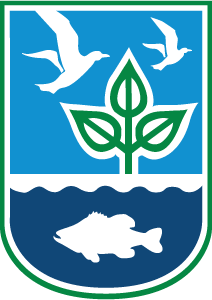The Farm, Forest and Open Space Act
Rhode Island's farms, forest and other open space provide many benefits to its citizens. Local farms ensure a readily available source of food close to metropolitan areas, while forestland and open space are key natural resources that provide recreational areas and contribute to the welfare and happiness of the state's inhabitants. Because of the economic pressure to convert these lands to development or another more profitable land use, Rhode Island's farms, forests and open spaces are rapidly disappearing. The Farm, Forest and Open Space Act helps citizens conserve these lands for themselves and for future generations.
Rhode Island law (Chapter 44-27) allows property enrolled in the Farm, Forest and Open Space Program to be assessed at its current use, not its value for development. The purpose of the law is not to reduce property taxes, but to conserve Rhode Island's productive agricultural and forest land by reducing the chance it will have to be sold for development.
The recommended current use assessment categories (see table below) are established by a Farm, Forest, and Open Space Land Value Subcommittee formed by the Governor in 1999. The value assigned to each class is based on the land's potential to produce a crop or soil limitations and is periodically updated to reflect changes in economic conditions.
Land Classifications for Property Enrolled in The Farm, Forest and Open Space Act:
- Farmland: ornamental, vegetable and orchard crops, dairy and livestock (including forage crops);
- Forestland & Wetland;
- Open Space: Slight, moderate, and severe soil limitations.
The law establishes three categories of land eligible for enrollment in the Program and authorizes DEM to establish regulations governing farm and forestland enrolled in the Program. The open space classification is administered by the community where the property is located.
Forestland Classification
The Farm, Forest, and Open Space Act (FFOS) reduces property tax on forest land under active management and requires:
- Minimum property size of 10 acres of forest land
- Forest Stewardship Plan prepared by a consulting forester
- A Forest Stewardship Plan documents the forestland resources – including soil and water quality, wildlife habitat, timber value, and outdoor recreation – and recommends management activities based on landowner goals and priorities for the next 10 years.
- a plan and site review every 5 years to remain in the current use tax program, and a new/updated plan every 10 years.
- Your consulting forester will write the plan and you will submit the FFOS application and fee ($10) to DAFE through the online permit system for approval by the Stewardship Forester. This application process requires that you create an account - the instructions are below.
NRCS and FFOS: A plan that meets both the Natural Resources Conservation Service (NRCS) and FFOS requirements is eligible for both programs. Please discuss with your NRCS Planner and your forestry consultant who writes your plan.
Changing Land Ownership
Enrollment in the FFOS program does not limit the use or sale of the property and does not extend to future owners. A new landowner must register for the program if they choose, even if the property is enrolled under previous ownership.
Applications are accessed by the DEM Division of Agriculture and Forest Environment (DAFE) Online Application Portal.
The online permit system requires that the Landowner upload the application for forestland designation with the required fee ($10). This means the landowner must create an account to submit the application and make the electronic payment. When the application is approved, the Certificate of Forestland Designation will be issued through the online portal.
Additional Resources
- DEM Division of Agriculture and Forest Environment's Forest Stewardship Program
- Designation of Farmland and Designation of Forestland Applications are found in the DAFE Online Permit Application Portal
- RIGL Chapter 44-27: Taxation of Farm, Forest and Open Space Land
- Rules and Regulations for Enforcement of the Farm, Forest, and Open Space Act
